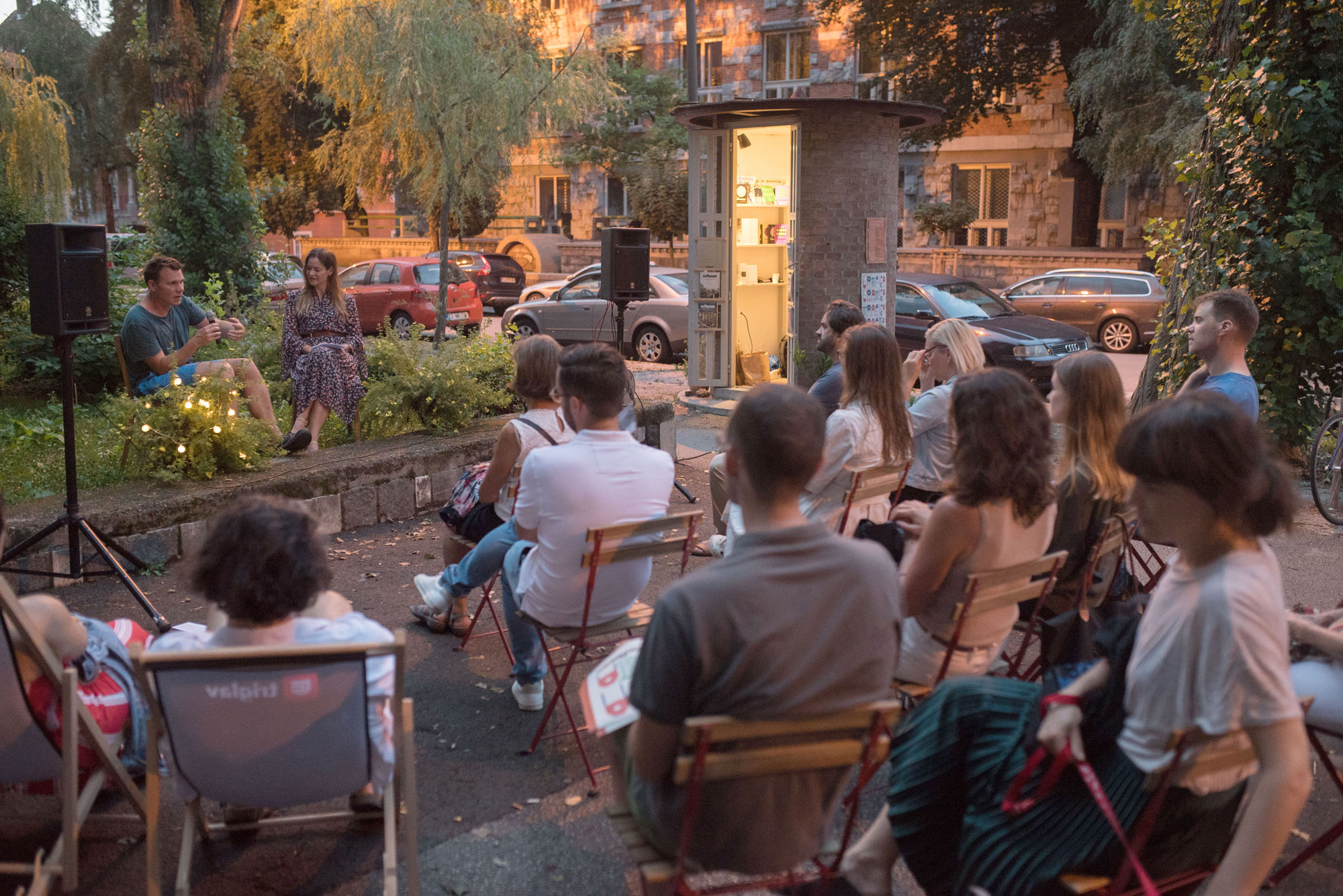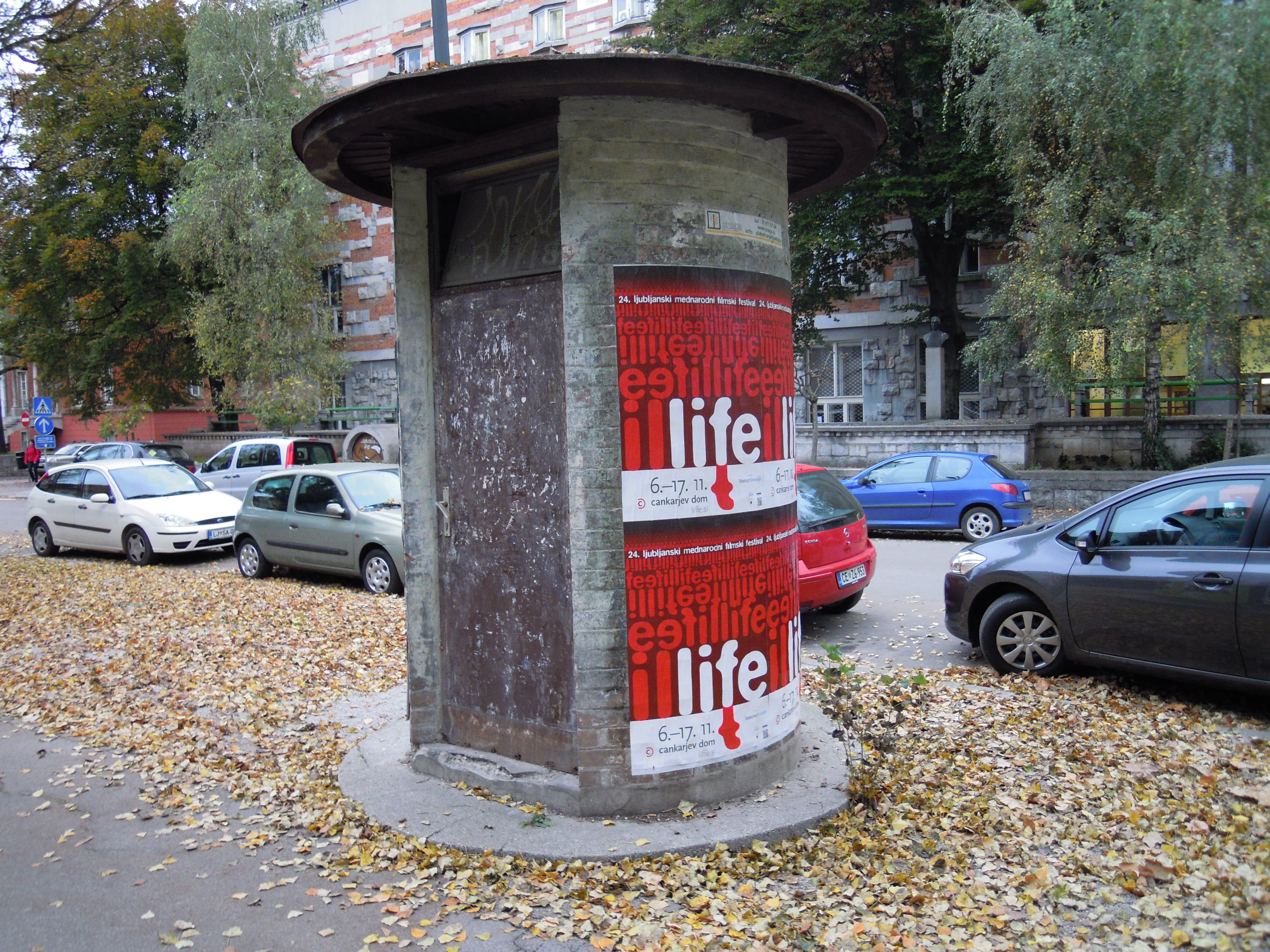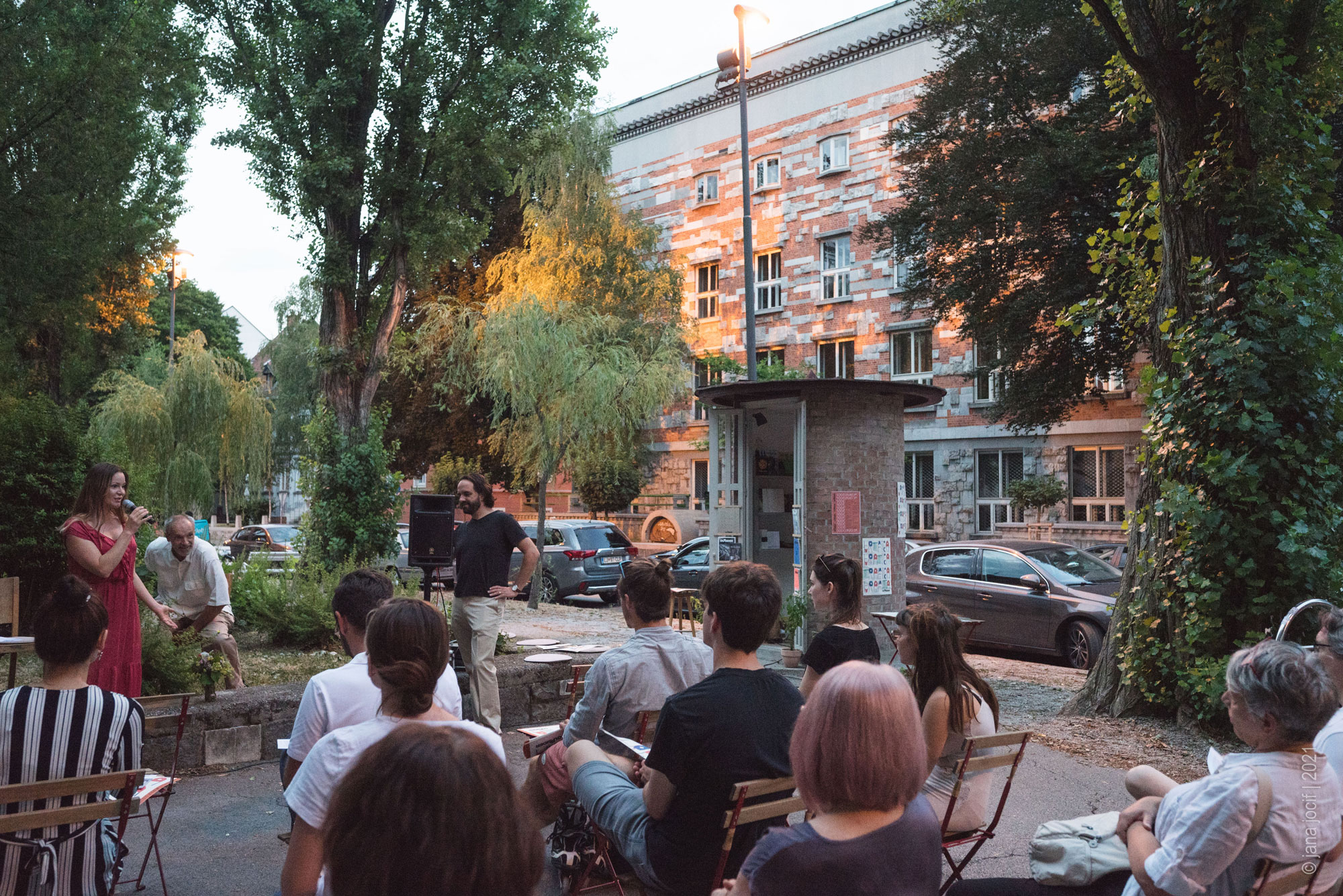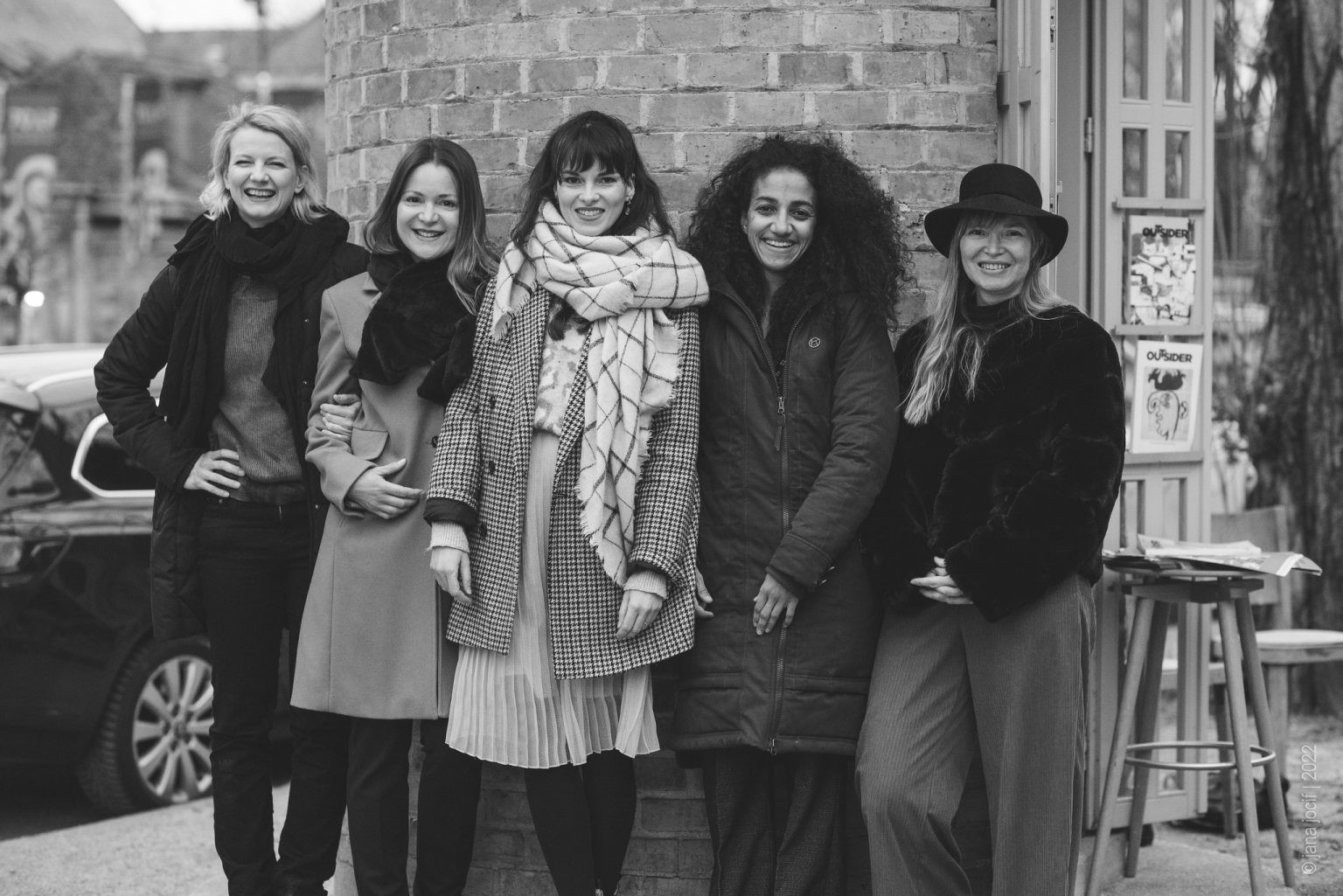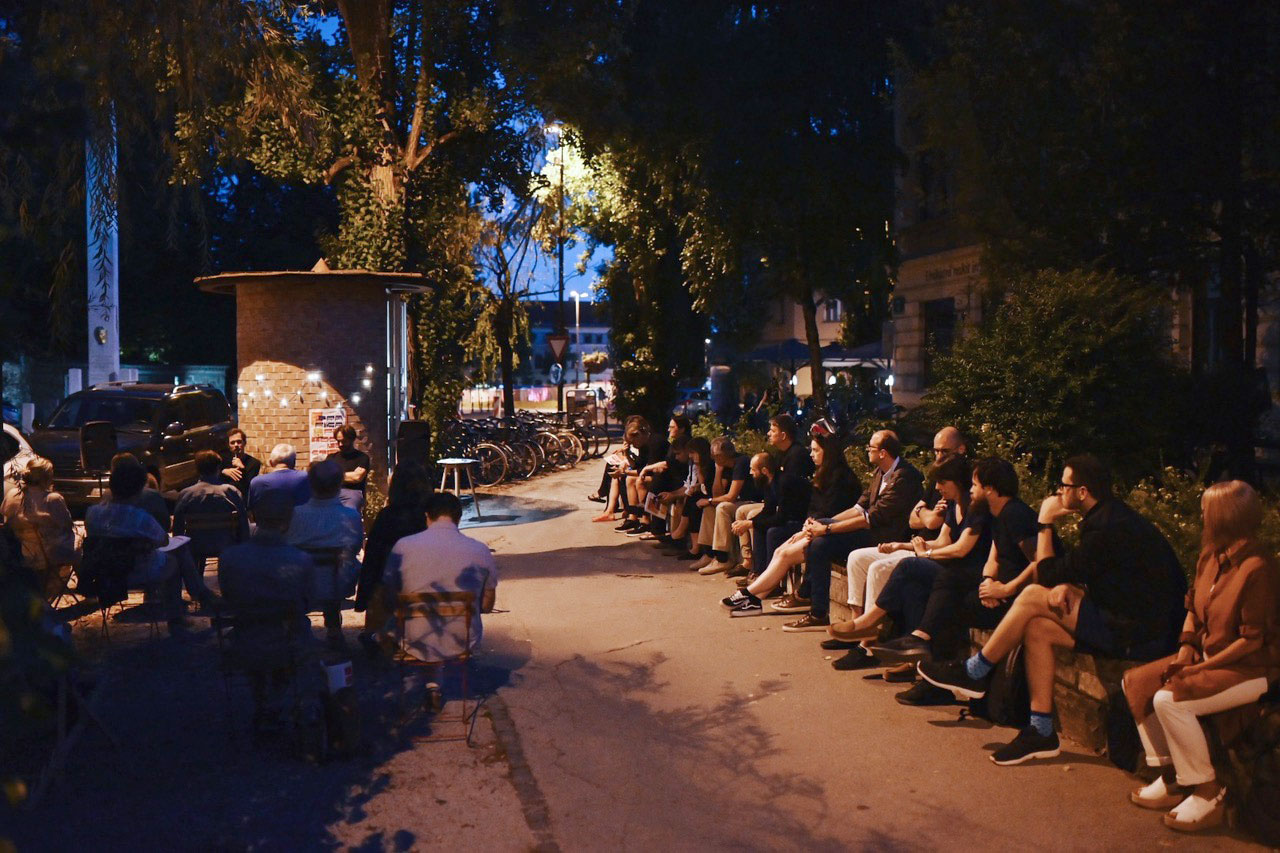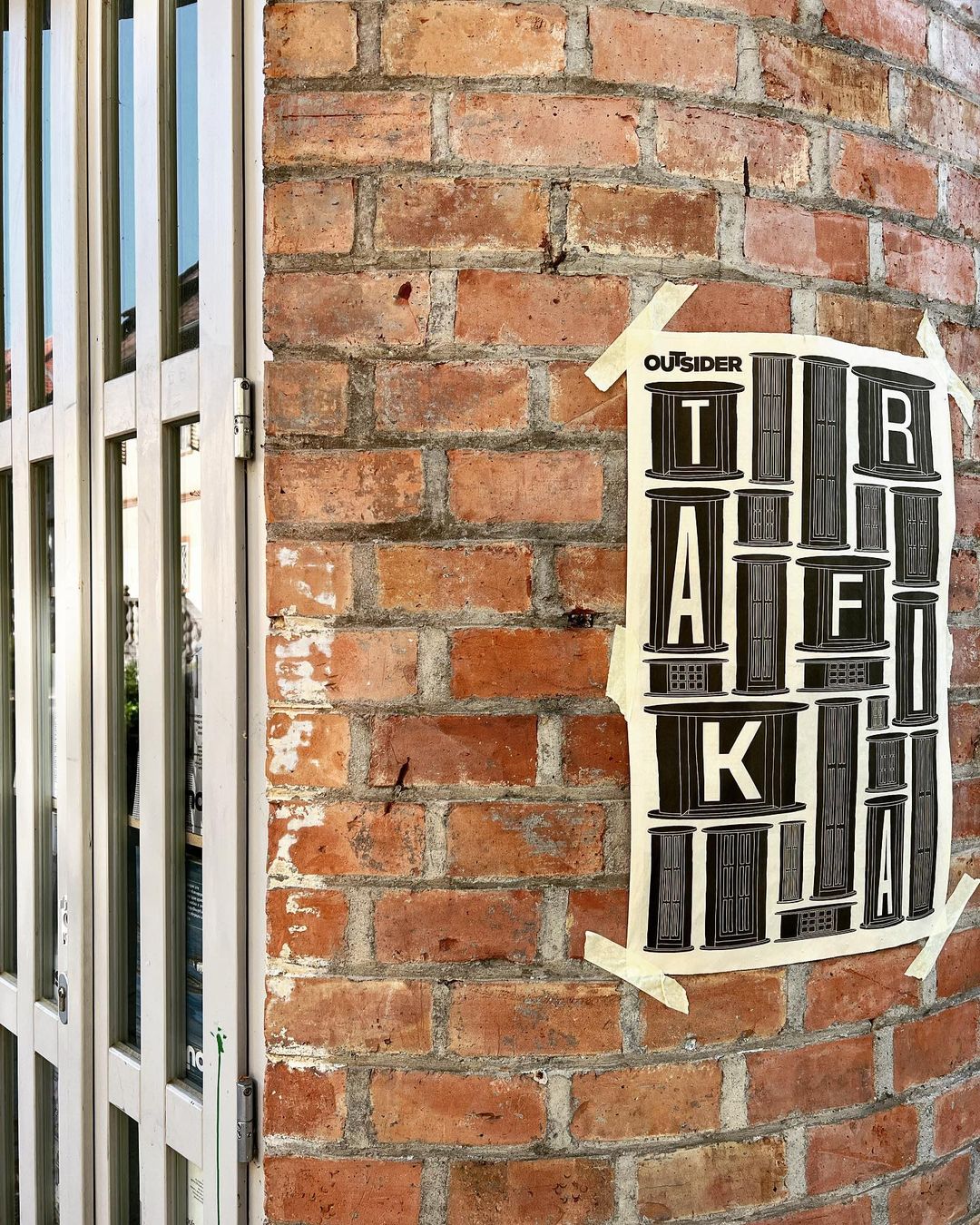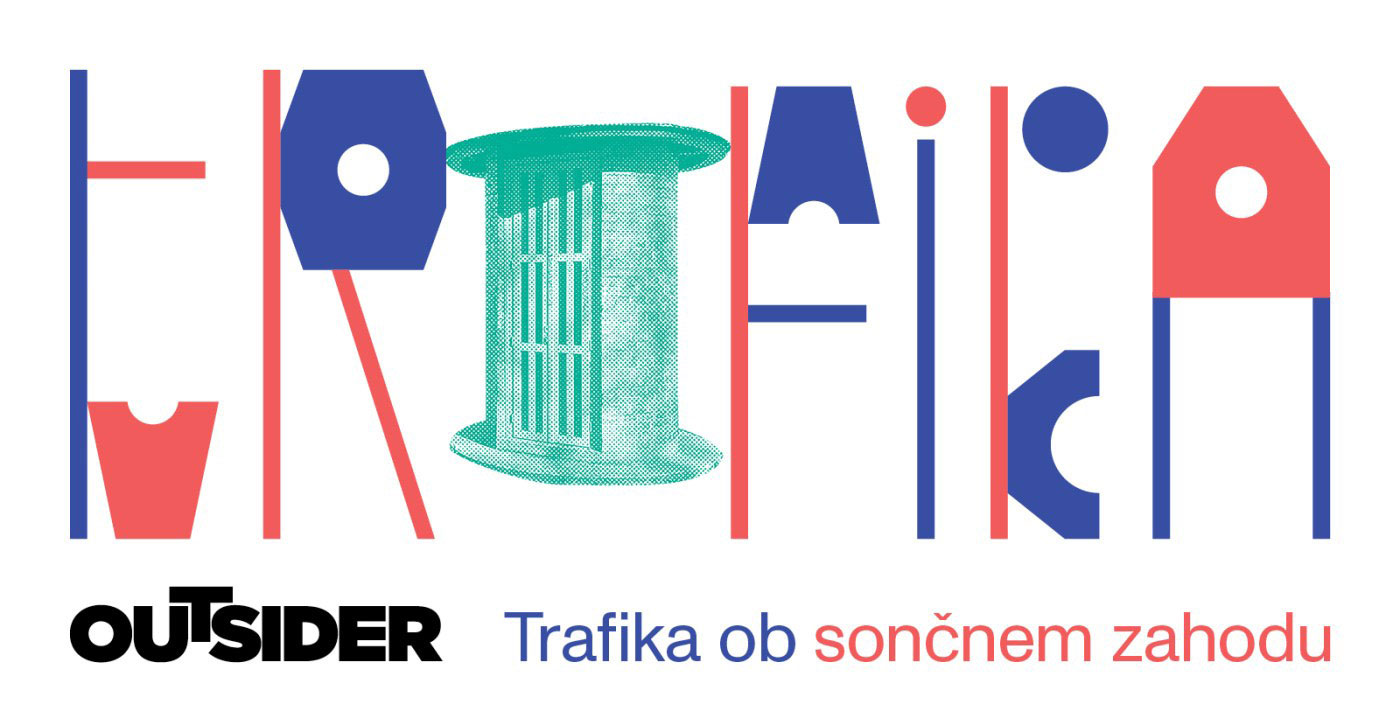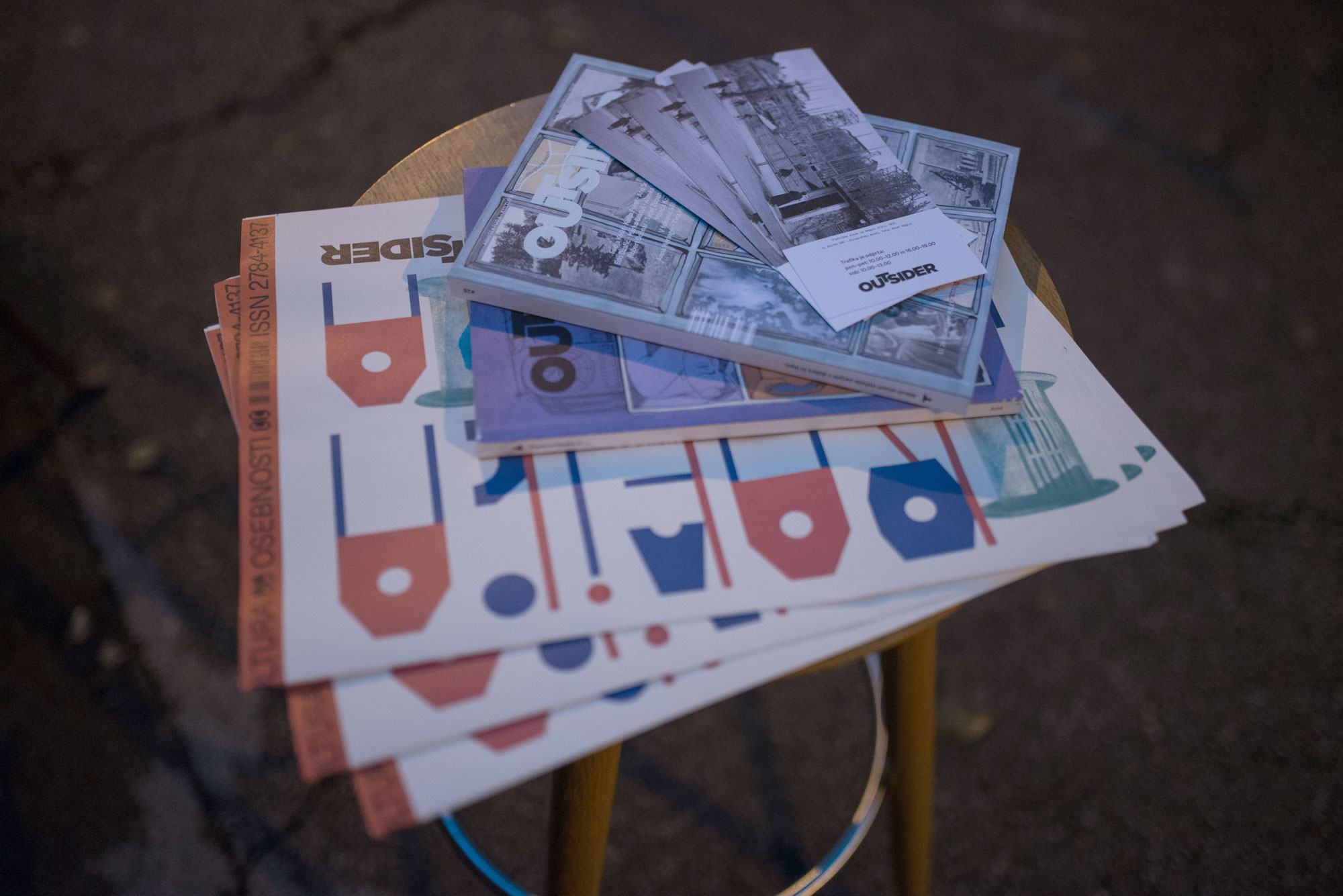Previous state
In the 1930s, architect Jože Plečnik designed three kiosks for selling newspapers and cigarettes in Ljubljana, as part of a series of larger projects for the public space. Back then, kiosks were covered in wild creeper plants and carried advertisements.
One of the Plečnik kiosks is located on Vegova Street, in central Ljubljana. The architect imagined this street as a cultural avenue that would stretch from the Knafljev passage, in the city centre, all the way to the Trnovo Church, on the outskirts. Today, the street is lined by buildings dedicated to culture and architecture, but there is no real connection between them. This particular kiosk had been abandoned for thirteen years, and was only occasionally covered in posters.
Aim of the intervention
Outsider, the architecture magazine, saw potential in this kiosk: they thought it could become a small-yet-potent connection point, generating culture and architecture in the city, so they decided to revive it in 2021. The object of their intervention is modest: a humble brick kiosk from the 1930s, less than 2 square metres, which most passers-by don’t even notice. However, by bringing it back to life, its effect on the space is greatly amplified, and it suddenly stands out.
In this project, the abandoned kiosk was seen from a new perspective, whereby it came to be understood as an installation that is physically small, but conceptually large: it is a generator of public space.
Description
With this intervention, the kiosk became a point of sale for Outsider magazine, as well as other international architecture publications. The kiosk did not have its own electric connection, so it used the electricity from a nearby lamppost that turns on at nightfall, triggered by a sensor. The kiosk led to the creation of a new street festival, a lively and engaging public space for debating and sharing ideas.
Assessment
The Plečnik kiosk has been converted into an efficient, poetic and modern space. In this project, the architects worked out how to make the most of a tiny structure to create a new public space, built with thought and dialogue rather than bricks.
The kiosk’s visitors can take away the free monthly newspaper Trafika, a publication featuring stories about public space and its importance in terms of encouraging socialisation, collaboration and debate in society.
When a nearby lamppost comes on, interlocutors from the world of architecture, culture and society are invited to converse. The activities are free and open to the public.
[Last update: 15/11/2022]


